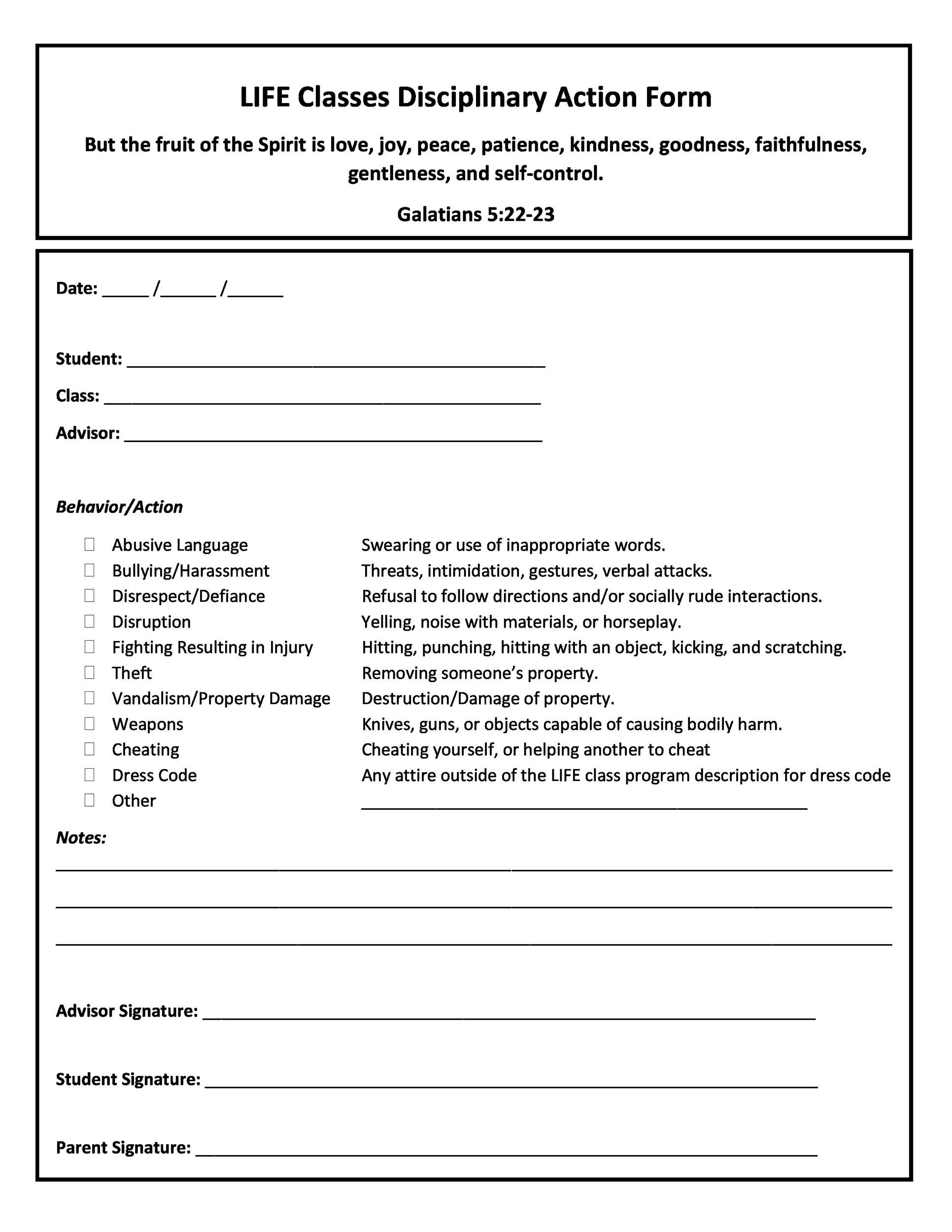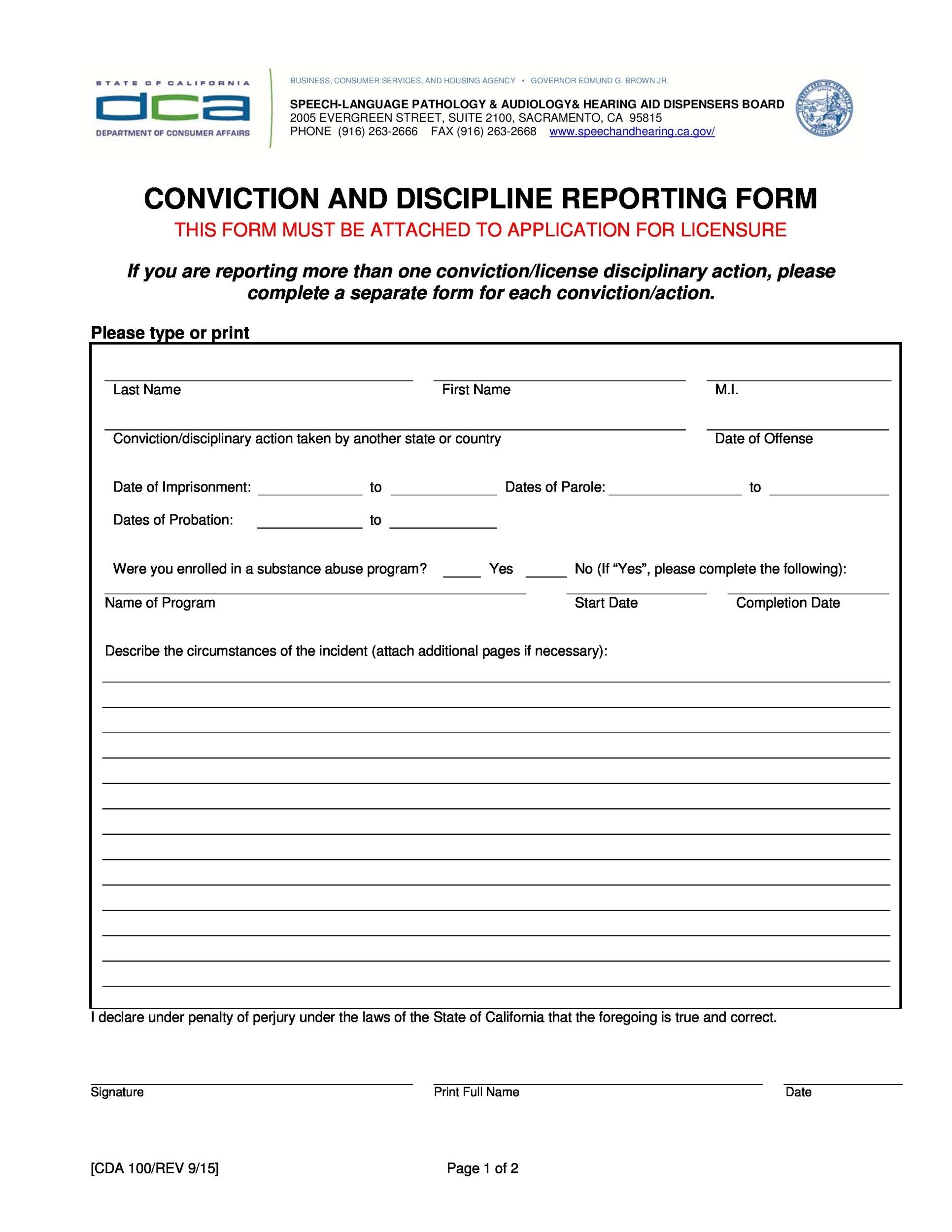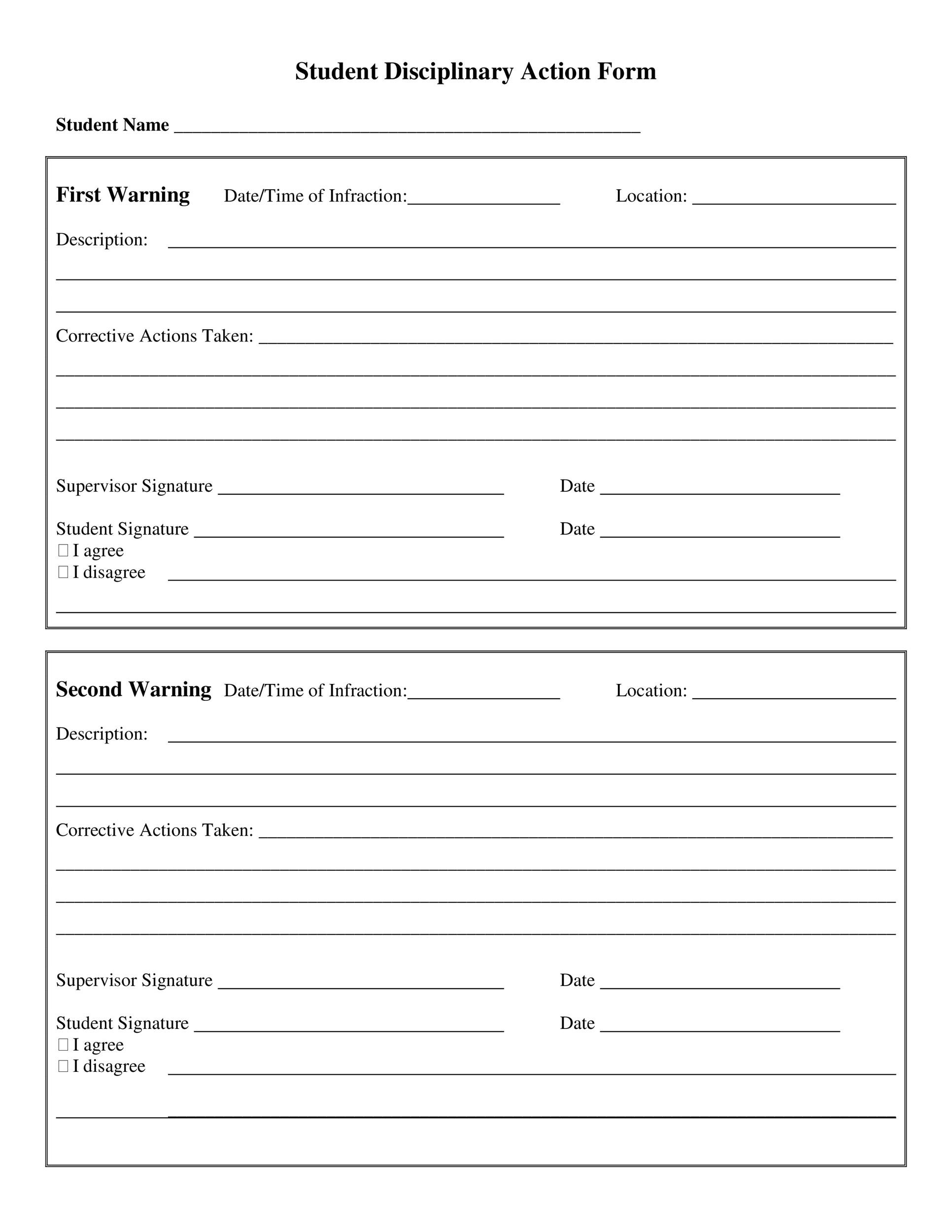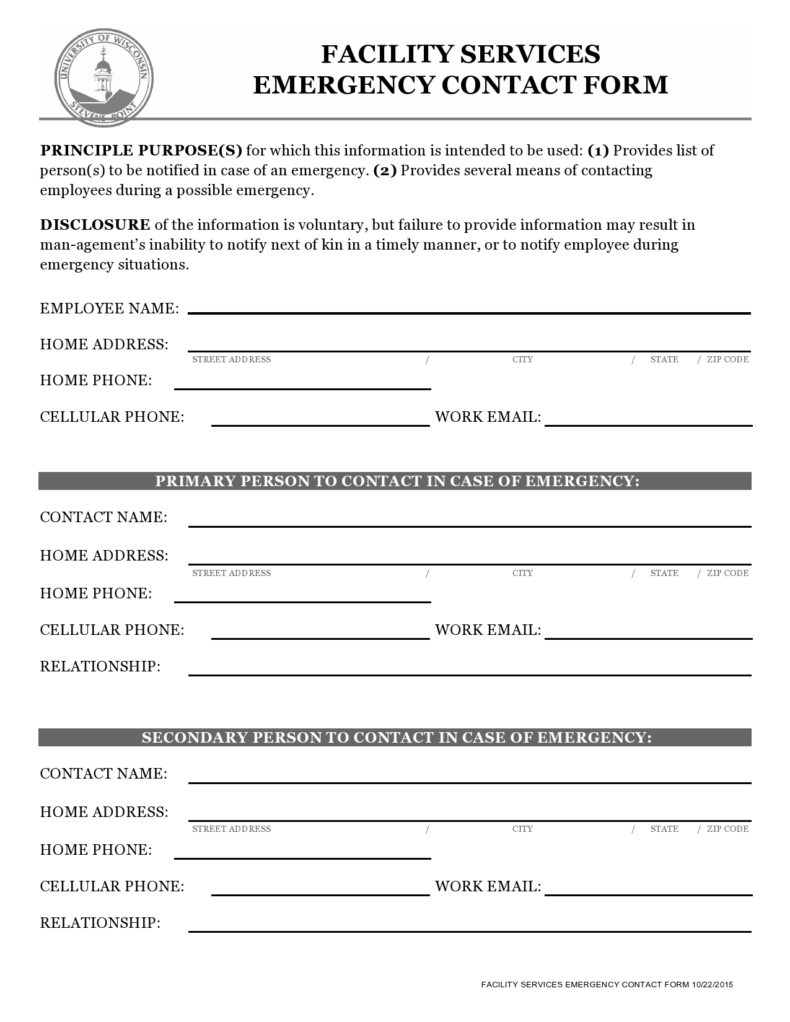In the realm of effective human resources management, employee write-up forms are a vital instrument for documenting and addressing workplace concerns.
These documents are crucial for preserving workplace harmony, promoting accountability, and protecting the interests of an organization.
Table of Contents
- 1 Employee Write Up Forms
- 2 What is an Employee Write-Up Form
- 3 Disciplinary Action Forms
- 4 What is an Employee Write-Up Form Template
- 5 Why are Employee Write-Up Forms Important?
- 6 Employee Write Up Templates
- 7 What are the Different Types of Employee Write-Ups?
- 8 How to Create an Employee Write-Up Form
- 9 Employee Write Up Examples
- 10 Conclusion
In this article, we delve into the core significance of employee write-up forms, grasp their importance, and explore the art of crafting personalized versions that align with your organization’s distinct requirements.
Whether you’re an HR expert or a business owner, it’s important to learn how to use this tool to improve fairness, openness, and communication at work.
Employee Write Up Forms
What is an Employee Write-Up Form
An employee write-up form serves as a formal record used by employers to track an employee’s workplace behavior, job performance, and conduct.
This instrument promotes transparency, encourages open communication, and establishes accountability by enabling employers to record instances of both favorable and unfavorable employee conduct, encompassing aspects such as punctuality, productivity, and adherence to company policies.
Here’s how an employee write-up form helps:
- It helps provide constructive feedback and outline expectations.
- It assists in establishing a clear path for employee improvement.
- It includes sections for employee information, date, incident details, witnesses, and actions taken.
- It contributes to maintaining a productive and harmonious work environment.
- It addresses concerns and documents corrective actions.
- It fosters a sense of accountability among employees.
- It is integral to effective human resources management.
- It enhances workplace communication and resolves workplace issues.
Disciplinary Action Forms
What is an Employee Write-Up Form Template
A write-up form template is a pre-designed document format used by organizations to create consistent and standardized records of employee performance issues, disciplinary actions, or other significant workplace incidents.
These templates are valuable tools in human resources management as they streamline the process of documenting and addressing various workplace situations.
In short, a write-up form template is a blank, structured document that includes fields and sections for essential information such as employee details, incident descriptions, dates, and recommended actions.
It provides a framework that ensures crucial details are not overlooked and facilitates clear communication between employers and employees.
Employers can tailor these templates to their specific needs by customizing sections, adding company-specific policies or guidelines, and adapting the form’s content to suit the unique circumstances of the incident in question.
This flexibility allows organizations to maintain consistency while addressing a wide range of workplace issues.
By using a write-up form template, organizations can promote fairness and transparency in managing employee matters, ensure compliance with company policies and labor laws, and establish a clear record of actions taken to address performance or conduct concerns.
These templates are essential tools for effective human resources management, helping organizations maintain a productive and harmonious work environment.
Why are Employee Write-Up Forms Important?
Employee Write-Up Forms are essential tools for effective management and maintaining a productive and harmonious work environment. They serve various crucial purposes, including:
- Documentation of Employee Performance and Conduct
Write-up forms serve as official records of an employee’s performance and behavior in the workplace.
They provide a structured way to document both positive achievements and areas needing improvement, making it easier to track an employee’s progress over the course of their employment. - Legal Protection
In cases of employee disputes, misconduct allegations, or legal issues, well-documented write-up forms can provide crucial evidence to support the employer’s actions and decisions.
This documentation can help protect the organization from potential legal claims or disputes. - Clarity and Communication
Write-up forms facilitate clear communication between employers and employees. They outline expectations, highlight areas of concern, and establish a record of discussions and actions taken to address issues.
This clarity can help employees understand what is expected of them and the consequences of their actions. - Accountability
By requiring employees and supervisors to sign and acknowledge write-up forms, organizations promote accountability. Employees are made aware of their performance or conduct issues and are encouraged to take responsibility for their inappropriate behavior or actions.
This can motivate employees to improve their behavior or performance and stick to the rules in the employee handbook. - Consistency and Fairness
Write-up forms help ensure consistency in how performance and conduct issues are addressed across the organization. When supervisors use standardized forms and procedures, it reduces the likelihood of bias or discrimination in the disciplinary process, promoting fairness and equality. - Progressive Discipline
Write-up forms are often part of a progressive disciplinary action. They allow employers to track instances of misconduct or poor performance and implement a fair and consistent sequence of corrective actions.
These actions include verbal warnings, written warnings, and more severe measures if necessary. All of these are documented in an employee’s personnel file for future reference. - Performance Improvement
In addition to addressing misconduct, write-up forms can be used to develop performance improvement plans. These plans outline specific goals and actions that employees should take to enhance their skills or address an employee’s performance. - Compliance with Company Policies and Regulations
Write-up forms help organizations ensure that they are in compliance with their own internal policies and procedures, as well as relevant labor laws and regulations.
Failing to document employee records and address performance or conduct issues can lead to both legal action and regulatory risks. - Employee Development
Write-up forms can also serve as a tool for constructive feedback and employee development. They provide a platform for discussing areas where employees can improve and for setting goals for their professional growth.
To sum it up, a free employee write-up template is like a trusty companion in the journey of handling employee performance and behavior. It not only keeps things legal but also helps in keeping the communication channels open and ensures everyone gets a fair deal within the organization.
When you put these templates to good use, they play a vital role in creating a well-structured and efficient work environment, all while safeguarding the interests of both employers and employees.
Employee Write Up Templates
What are the Different Types of Employee Write-Ups?
There are many different types of employee write-up forms, each designed to address specific situations or concerns in the workplace.
Here are some common types of employee write-up forms:
- Performance Improvement Plan (PIP) Form: This type of employee disciplinary action form is used when an employee’s performance consistently falls below expectations. It outlines specific performance goals, expectations, and a timeline for improvement. A PIP is a constructive tool aimed at helping employees enhance their skills and abilities.
- Verbal Warning Form: A verbal warning form is used to document informal discussions with an employee regarding minor performance or behavioral issues. It serves as a record of the conversation and may be a precursor to more formal write-up forms.
- Written Warning Form: A written warning form is a more formal document used to address repeated or significant performance or conduct issues. It outlines the problem, the expected changes, and the consequences if the issues persist.
- Suspension Notice Form: When employee misconduct or policy violations are serious enough to warrant suspension, a suspension notice form is used to document the suspension period, the reasons for it, and any conditions for reinstatement.
- Termination Notice Form: This is one of the most critical write-up forms. It is used when an employee’s performance or behavior issues have not improved despite previous warnings or interventions. It outlines the reasons for termination and the effective date of termination.
- Attendance Write-Up Form: This form is used to address attendance-related issues, such as tardiness or constant absenteeism. It may include a record of dates and times of the incidents, explanations, and expectations for improvement.
- Safety Violation Form: When an employee fails to adhere to safety protocols, a safety violation form is used to document the incident, explain the safety breach, and outline steps to prevent future violations.
- Harassment or Discrimination Complaint Form: In cases of harassment or discrimination complaints, this form is used to document the details of the complaint, the individuals involved, and the steps taken to investigate and address the issue.
- Conflict Resolution Form: When conflicts arise between employees, a conflict resolution form helps document the nature of the conflict, the parties involved, and the steps taken to mediate or resolve the dispute.
- Employee Appreciation Form: On a more positive note, employee appreciation forms are used to recognize and document exceptional performance, contributions, or achievements. They can boost employee morale and motivation.
- Employee Self-Assessment Form: Some organizations use self-assessment forms that allow employees to evaluate their performance and set improvement goals. This can be part of the performance review process.
- Performance Review Form: While not strictly a write-up form, performance review forms are used to document and assess an employee’s overall performance over a specified period. They often include sections for strengths, areas for improvement, and goal setting.
The specific types and formats of employee write-up forms can vary by organization, industry, and the nature of the workplace issues being addressed.
It’s important for organizations to have clear and consistent written documentation processes to ensure fair and effective management of employee performance and conduct when they write up an employee.
How to Create an Employee Write-Up Form
Creating an employee write-up form involves designing a structured document that allows you to record and address various workplace issues professionally and consistently.
Here are steps to help you create an effective employee write-up form:
- Identify the Purpose and Scope:
Determine the specific purpose of the form. What types of issues or incidents will it address? Common issues include performance concerns, behavioral problems, attendance issues, and policy violations.
Define the scope of the form, including whether it will be used for verbal warnings, written warnings, performance improvement plans, or other disciplinary actions. - Select a Format:
Choose a format for your form. It can be a physical paper document, a digital form, or an entry in an HR management system. Consider what will work best for your organization. - Header Information:
Include a header with the name and logo of your organization, the form’s title (e.g., “Employee Write-Up Form”), and a unique identification number or code for each form. - Employee Information:
Create a section for employee information, including the employee’s name, job title, department, and employee ID or badge number. - Incident Details:
Create a section to capture the incident details. This should include the date and time of the incident, the location, and a brief description of what occurred. - Witness Information (if applicable):
If there were witnesses to the incident, provide space to record their names, job titles, and statements.
Description of the Issue:
Include a section to describe the issue or violation. Be clear and specific about what the employee did or did not do, and reference relevant company policies or expectations. - Expectations and Corrective Actions:
Outline the expectations for the employee going forward. What actions or changes are required for improvement or compliance?
Specify any corrective actions or consequences if the issue persists, such as a verbal warning, written warning, probation, suspension, or termination.
In cases where corrective action is necessary, companies utilize a standardized form employee write-up process to ensure consistency and fairness. - Employee Response:
Allow space for the employee to provide their response to the incident or issue. This can include their understanding of the situation and any comments or objections. - Signatures and Dates:
Create signature lines for the employee, the supervisor or manager, and any witnesses. Ensure that each party signs and dates the form to acknowledge their participation and understanding. - Attachments (if necessary):
If there are supporting documents, such as emails, reports, or other evidence related to the incident, include an option to attach these documents or reference them. - Review and Approval Process:
Define a process for how the form will be reviewed and approved, including who in the organization has the authority to sign off on disciplinary actions. - Distribution and Record-Keeping:
Establish a system for distributing copies of the form to relevant parties (employee, HR, supervisor, etc.) and ensure proper record-keeping, either physically or electronically. - Training and Implementation:
Train relevant personnel, such as HR professionals and managers, on how to use the form effectively and consistently. - Regular Updates:
Periodically review and update the employee write-up form to ensure it remains relevant and compliant with company policies and legal requirements. - Testing and Feedback:
Before finalizing the form, test it within your organization and gather feedback from HR professionals, managers, and employees to make improvements if necessary.
Remember that the design and content of your employee write-up form should align with your organization’s policies, values, and legal requirements.
Once created, use it consistently and fairly to address workplace issues and maintain a productive and harmonious work environment.
Employee Write Up Examples
Conclusion
Employee write-ups are vital tools in effective HR management, promoting transparency and accountability. They come in various types, customized to address specific workplace issues.
We stressed how important it is to document performance, follow the rules, and be fair.
We also gave a simple guide on making personalized forms and how they help in clear communication.
Incorporating these forms into company policy and HR processes can maintain a harmonious work environment and protect organizational and employee interests.





















































